“Bonsai” Themed Specimen Collections at the Washington Park Arboretum
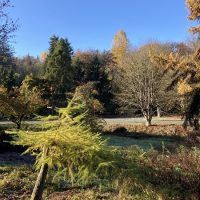
Bonsai literally means “tray gardening” or defined as the Japanese art of growing and training miniature trees in pots. These selections are reminiscent of the bonsai art form, although they were never grown in pots nor trained. Enjoy the photos!
1) Larix decidua European Larch
The larches are unusual conifers in that they are deciduous and drop all their leaves each autumn.
Read more“The Hunt for Red November” – Brilliant Reds of the Autumn Landscape
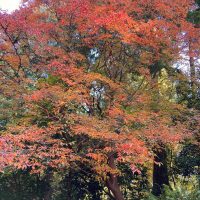
1) Acer palmatum ‘Beni otaki’ Red Bamboo / ‘Beni otaki’ Japanese Maple
The Red Bamboo or ‘Beni otaki’ Japanese Maple is a medium-sized Japanese maple, with deep red-purple foliage from spring to summer, which becomes green with maturity.
Autumn leaves turn a rich crimson.
Acer palmatum ‘Beni otake’ grows into a lovely rounded shape and is more tolerant of sun than most other Japanese maples.
“Sugar We’re Going Down” – The Sugar Maple Plant Highlight

When Fall Out Boy sang,
“We’re going down, down in an earlier round
And sugar, we’re going down swinging,”
they were actually referring to leaves falling in autumn and the wonderful process of tapping sugar maple trees for syrup (not really, but wouldn’t it be funny).
Read moreFantastic Fall Colors at the Washington Park Arboretum
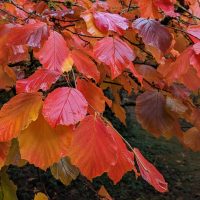
Fall has arrived at the Washington Park Arboretum and fantastic colors are here to welcome you! Come by and see the beautiful collections transition into winter dormancy.
1) Hamamelis x intermedia ‘Diane’ Witch-hazel
This is an Asian hybrid Witch-hazel.
The stunning colors of this small tree bring moments of summer during the cloudy fall days.
This witch-hazel and others can be found on the north side of the Witt Winter Garden.
Beautiful foliage that isn’t ready to leaf (leave) the Washington Park Arboretum
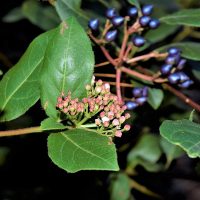
With the drought still hanging around, these drought-tolerant species are not ready to drop their foliage and are standing tall.
1) Viburnum tinus ‘Purpureum’
Native to the Mediterranean region.
With blue/purple berries and white/pink flowers and purple foliage, this is a beautiful shrub for interest in October. Great resource for pollinators.
Many found along the Arboretum Loop Trail (A.L.T) on the west side in the Viburnum Collection.
UW Farm Weekly Dirt: Harvest Dinner Reflections
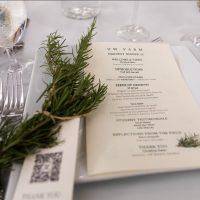
We had beautiful weather at last week’s sold out Harvest Dinner fundraiser. – Together we raised over 200% more than any other farm fundraising event.
Read moreNotes from the Field
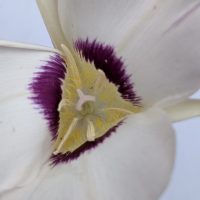
Group getting ready for the monitoring weekend. Credit: Anna Carragee
The cool, wet spring of 2022 set the stage for a productive field season and some excellent botanizing! The additional rainfall in many parts of the state meant that conditions were ripe for finding elusive rare annuals. The lower temperatures and higher moisture levels delayed bloom times for many species compared to recent years and also extended flowering, creating longer windows of opportunity to find the plants.
Exploring Indigenous Plant Uses in the Cascadia Forest

The Cascadia Focal Forest at the south end of the Arboretum is part of the Pacific Connections Garden. This forest showcases plants from the Siskiyous Mountains in southern Oregon and northern California. Many Indigenous groups (including the Shasta, Yurok, Grande Ronde, and Siletz) have roots in this area. Most of these groups were forced from their historical ranges. Despite the injustices and violence these groups endured, they continue to live in the vicinity and carry essential knowledge about the local flora.
Read moreUW Farm Weekly Dirt: New Tastes and Tours at the Annual UW Farm Harvest Dinner
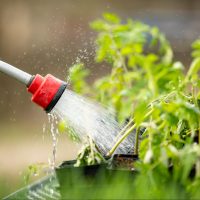
In eight days, the well known UW Farm Harvest Dinner will be held at the UW Botanic Gardens Center for Urban Horticulture. An event that grew from humble beginnings in 2014, run by the farm manager and students, has expanded from a simple community meal to a farm-to-table annual fundraiser.
Read moreUW Farm Weekly Dirt: Spicy Stir-Fried Chinese Cabbage

Our ‘Bilko’ Cabbage, that is included in your CSA, is a type of Napa or Chinese Cabbage. Napa cabbage is a large-headed cabbage with firmly packed, pale green leaves that you will usually find next to bok choy in Western supermarkets.
Read more